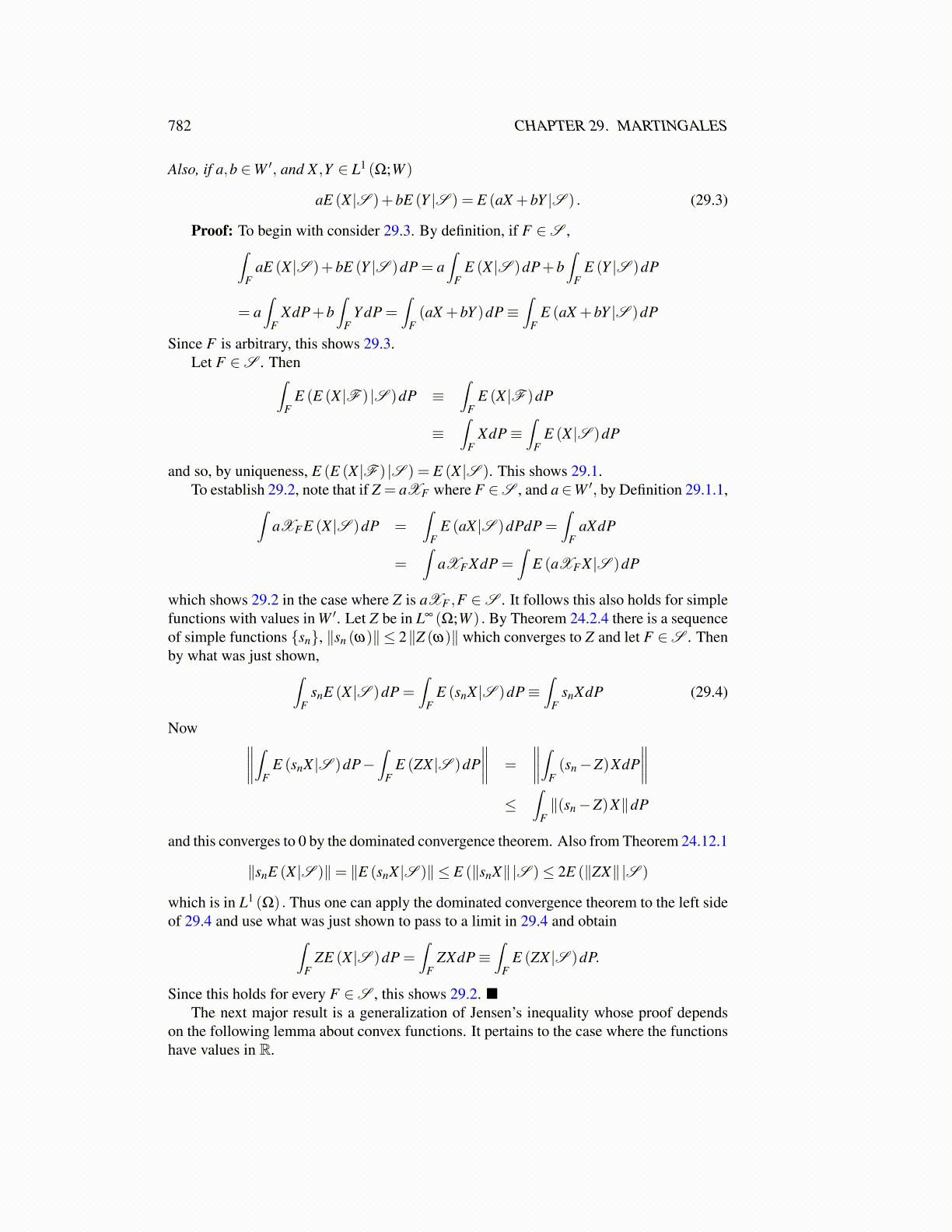
782 CHAPTER 29. MARTINGALES
Also, if a,b ∈W ′, and X ,Y ∈ L1 (Ω;W )
aE (X |S )+bE (Y |S ) = E (aX +bY |S ) . (29.3)
Proof: To begin with consider 29.3. By definition, if F ∈S ,∫F
aE (X |S )+bE (Y |S )dP = a∫
FE (X |S )dP+b
∫F
E (Y |S )dP
= a∫
FXdP+b
∫F
Y dP =∫
F(aX +bY )dP≡
∫F
E (aX +bY |S )dP
Since F is arbitrary, this shows 29.3.Let F ∈S . Then∫
FE (E (X |F ) |S )dP ≡
∫F
E (X |F )dP
≡∫
FXdP≡
∫F
E (X |S )dP
and so, by uniqueness, E (E (X |F ) |S ) = E (X |S ). This shows 29.1.To establish 29.2, note that if Z = aXF where F ∈S , and a∈W ′, by Definition 29.1.1,∫
aXF E (X |S )dP =∫
FE (aX |S )dPdP =
∫F
aXdP
=∫
aXF XdP =∫
E (aXF X |S )dP
which shows 29.2 in the case where Z is aXF ,F ∈S . It follows this also holds for simplefunctions with values in W ′. Let Z be in L∞ (Ω;W ) . By Theorem 24.2.4 there is a sequenceof simple functions {sn}, ∥sn (ω)∥ ≤ 2∥Z (ω)∥ which converges to Z and let F ∈S . Thenby what was just shown,∫
FsnE (X |S )dP =
∫F
E (snX |S )dP≡∫
FsnXdP (29.4)
Now ∥∥∥∥∫FE (snX |S )dP−
∫F
E (ZX |S )dP∥∥∥∥ =
∥∥∥∥∫F(sn−Z)XdP
∥∥∥∥≤
∫F∥(sn−Z)X∥dP
and this converges to 0 by the dominated convergence theorem. Also from Theorem 24.12.1
∥snE (X |S )∥= ∥E (snX |S )∥ ≤ E (∥snX∥|S )≤ 2E (∥ZX∥|S )
which is in L1 (Ω) . Thus one can apply the dominated convergence theorem to the left sideof 29.4 and use what was just shown to pass to a limit in 29.4 and obtain∫
FZE (X |S )dP =
∫F
ZXdP≡∫
FE (ZX |S )dP.
Since this holds for every F ∈S , this shows 29.2. ■The next major result is a generalization of Jensen’s inequality whose proof depends
on the following lemma about convex functions. It pertains to the case where the functionshave values in R.